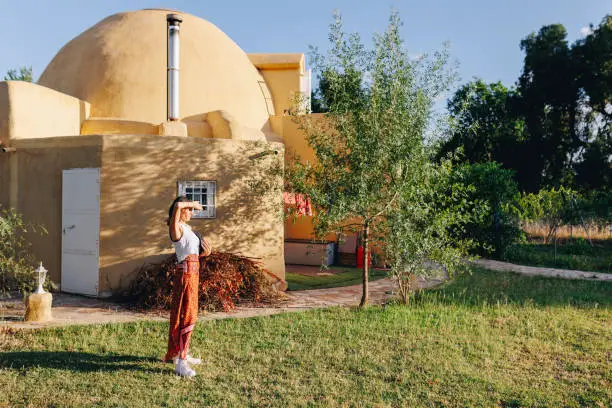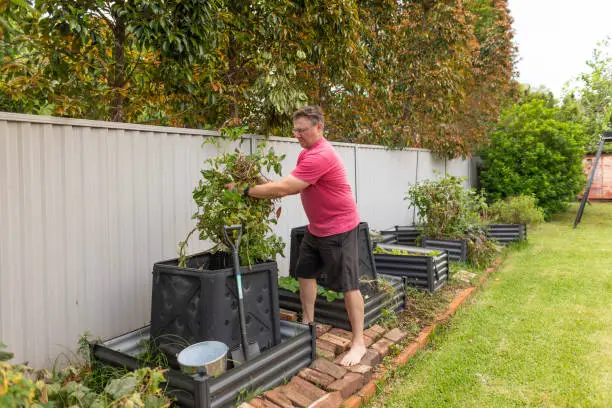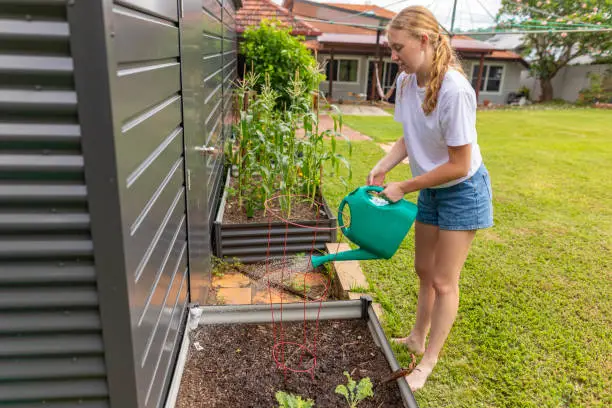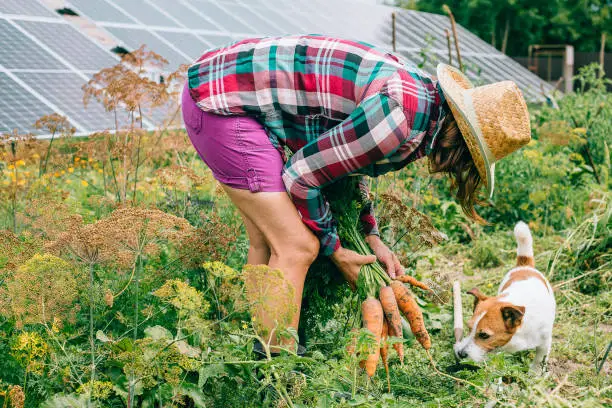Year-Round Gardening Greenhouse Construction
The backyard homesteading is rewarding and leads to self-sufficiency. Greenhouses are year-round productivity hubs for this self-sufficient lifestyle. This structure is designed to promote growth, resilience, and abundance year-round. Thus, building a greenhouse involves developing a permaculture-based micro-ecosystem.

Building a greenhouse starts with choosing a good spot. To maintain its aesthetics, a greenhouse should be situated in the most secluded portion of the garden. The positioning should prioritize sunlight. The structure should face southeast for morning sunshine. This orientation lets plants get enough light without scorching in the afternoon sun. Wind protection and water access are also necessary.
Greenhouse frame and panel material choice affect construction efficiency. While wood and glass are beautiful, polycarbonate panels and aluminum frames are durable, light-diffusing, and energy-efficient. Polycarbonate panels are known for retaining heat and filtering sunlight to maintain a consistent temperature. This is especially helpful for seedlings that need soft light and regular temperatures.
The greenhouse should maximize energy efficiency and meet local climate requirements. In colder locations, geodesic domes reduce heat loss and withstand winter. A lean-to greenhouse on a south-facing wall in warmer climates can use building heat. Rainwater harvesting and solar panels can increase the greenhouse’s self-sufficiency and reduce external resources.
Ventilation is also crucial. Humidity and heat can cause plant diseases and pain. Therefore, proper ventilation is vital. Fresh air circulates through manual or automatic venting devices and properly placed doors and windows. These systems can range from manual roof vents to automatic sensors that change indoor climate based on real-time conditions.
The greenhouse’s inside should be carefully planned to maximize room and light. Shorter, shade-tolerant plants can be in the understorey, while taller plants might be at the rear or sides. Trellises and hanging planters may utilize vertical space, producing a lush, productive, attractive garden.
Besides the greenhouse’s structure, the gardener’s knowledge and care determine its success. Understanding each plant’s moisture and nutritional needs is crucial. Composting, natural pest management, and companion planting improve the greenhouse’s ecosystem, boosting healthy growth and reducing chemical consumption.
A greenhouse evolves by nature. Adjustments may be needed to meet plant needs or boost structure efficiency. This iterative process makes greenhouse gardening fun and offers endless learning and growth.
Building a greenhouse for year-round planting is a complex endeavor. It requires extensive knowledge of light, heat, and life. A well-designed greenhouse provides a stable habitat for plants and a sanctuary for the gardener, connecting them to nature. A greenhouse becomes an integral component of the backyard homestead via careful planning, material selection, and design, demonstrating the resilience and abundance that can be produced through harmonious interaction with nature.
Making a Creative Workshop for Homestead Projects
Backyard homesteading entails more than just growing food or keeping poultry; it takes various skills and tools. This project centers on a workshop where dreams and necessities meet and plans become a reality. This structure is a hub for invention, repair, and craftsmanship that meets the homestead’s diversified demands.
The first step is choosing a location for this creative hub. The workshop should be accessible without interfering with the homestead’s residential and gardening areas. Quick access to the house is helpful in bad weather, but it should be far enough to keep noise and dust away from living spaces. North-facing windows give continuous, natural light, eliminating the need for artificial lighting and making precise work easier.
The workshop’s materials reflect backyard homesteading’s sustainability and efficiency. Green options include reclaimed wood, recycled insulation, and solar panels that reflect the homesteader lifestyle. Durable, locally obtained materials reduce the workshop’s environmental impact and boost household self-sufficiency.
The workshop’s design must be flexible and organized for current and future initiatives. A flexible, open floor concept with modular workstations accommodates carpentry, metalworking, pottery, and textile crafts. An organized environment relies on pegboards, shelves, and drawers to keep tools and materials accessible yet out of the way.
A functional workshop needs lighting and ventilation. Many windows brighten the space and provide airflow, essential for safety and comfort when working with chemicals or dust. No matter the time or weather, task lighting and quiet ventilation systems keep the workspace comfortable for lengthy work periods.
Power and water to the workshop must be planned. While self-sufficiency is the goal, stable electricity, and water assist many projects and operations. Solar panels, power tools, and lights demonstrate homesteading’s renewable energy principles. A rainwater harvesting system can provide non-potable water for cleaning and gardening, linking the workshop to sustainability.
Carefully inspect workshop safety features. Fire extinguishers, first aid kits, and PPE should be provided. For safety, workplaces should have non-slip floors, enough space around tools, and enough illumination. A strong workbench, vices, and clamps may secure materials and instruments for safe precision work.
Beyond the physical requirements of creating a workshop, its actual value is as a learning and creative hub. We recognize setbacks and accomplishments as milestones in education and skill acquisition. Workshops use traditional methods and current technology to solve problems and improve homestead self-sufficiency.
This creative hub allows family and community members to share skills, collaborate on projects, and promote self-reliance. Workshops can inspire courses and pass knowledge and skills to the next generation, ensuring the homesteading lifestyle lasts.
One builds a lifestyle of creativity, sustainability, and self-reliance by incorporating a workshop into backyard homesteading. The workshop shows the homesteader’s dedication to living a satisfying and sustainable life by implementing their goal. The workshop is a beacon of creativity on the homestead, transforming ideas into reality for a self-sufficient lifestyle via careful planning, deliberate design, and a commitment to sustainability.
A backyard homestead greenhouse becomes a growth sentinel as the seasons change and planting and harvesting cycles vary. The ideals of year-round gardening are lived behind these translucent walls. This glass-encased refuge promotes self-sufficiency by allowing homesteaders to grow various plants that would otherwise be weather-sensitive. The tenacity and adaptation of homesteading are shown in the evolution of greenhouses. Through each seed sown and every plant fostered, the greenhouse symbolizes sustainability, a microcosm of the world outside its glass, reflecting the more significant goals of individuals who desire to tread gently on the environment while reaping its bounty.
The workshop remains a farm staple as a symbol of endurance and inventiveness. It adapts to new difficulties and encourages innovation with each project. This dynamic room holds tools and materials and embodies homesteading’s self-reliance. The workshop promotes sustainable living by shaping wood, forging metal, and weaving cloth, showing that one can live independently with ability, enthusiasm, and resourcefulness. The workshop and greenhouse reflect the homesteader’s devotion to sustainability, self-sufficiency, and progress in their ways.






Leave a Reply